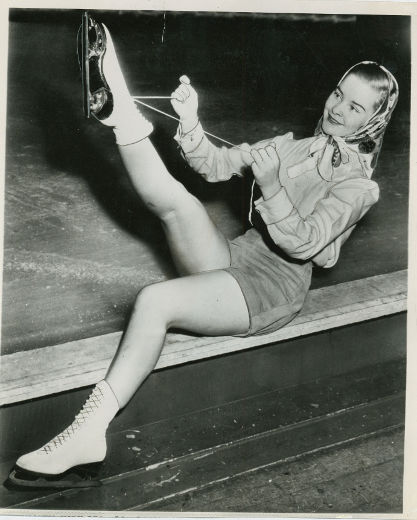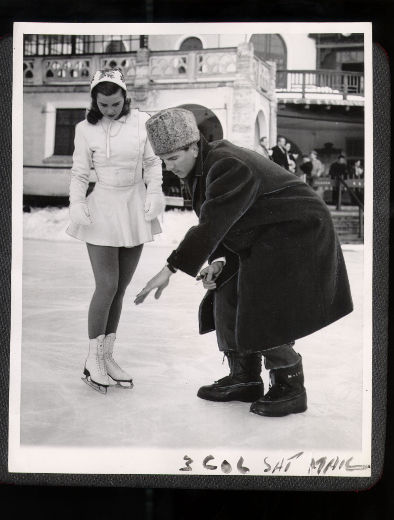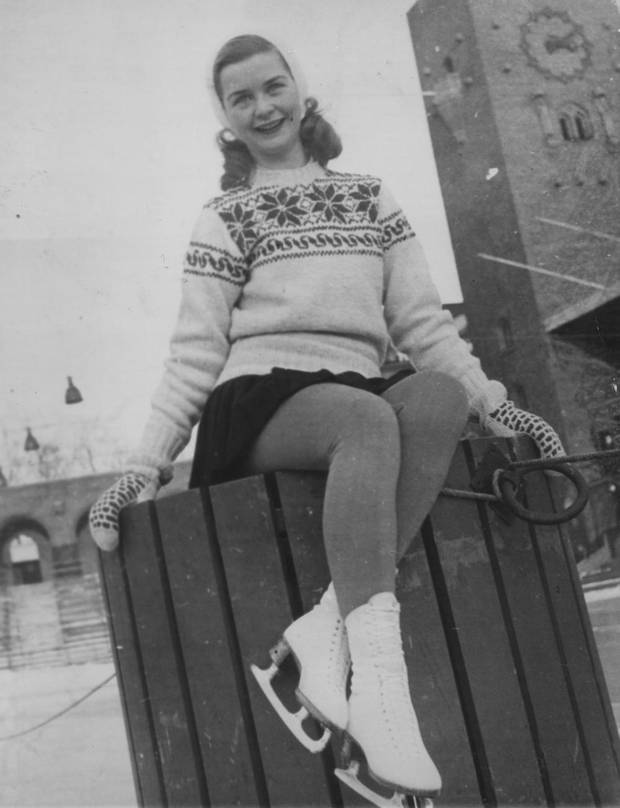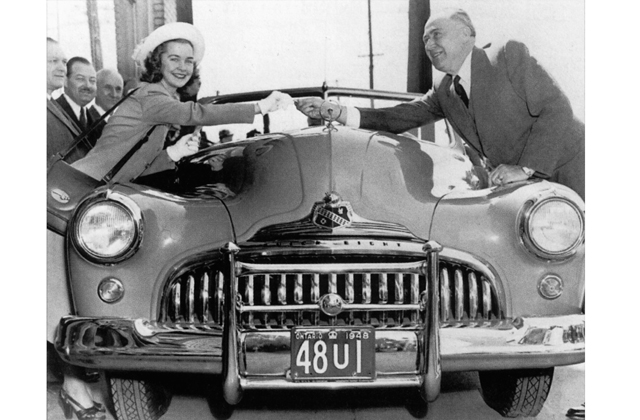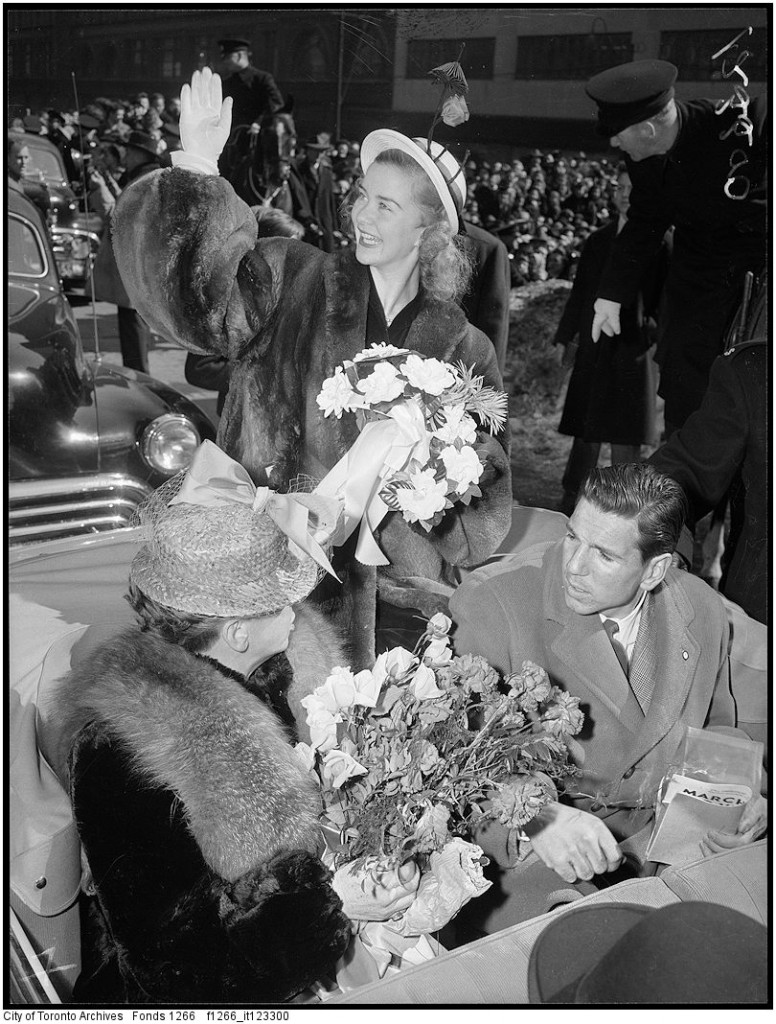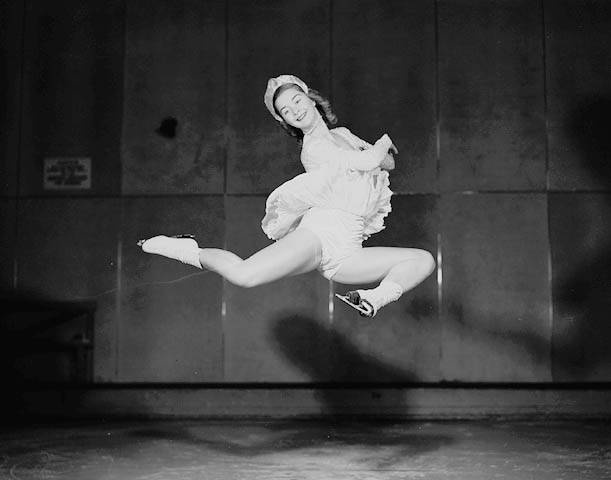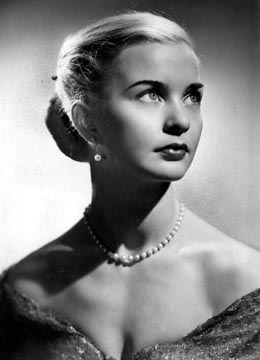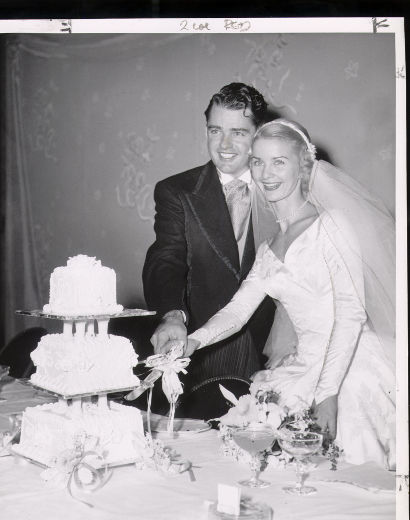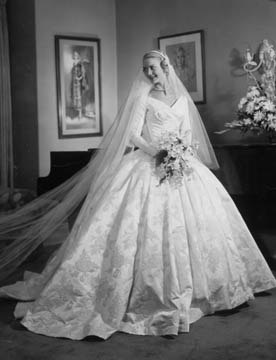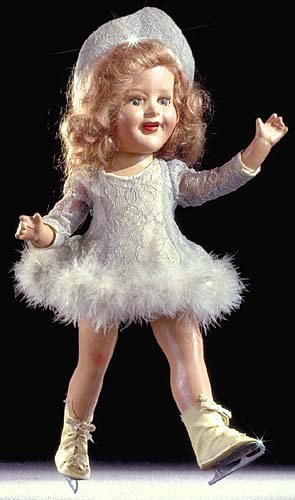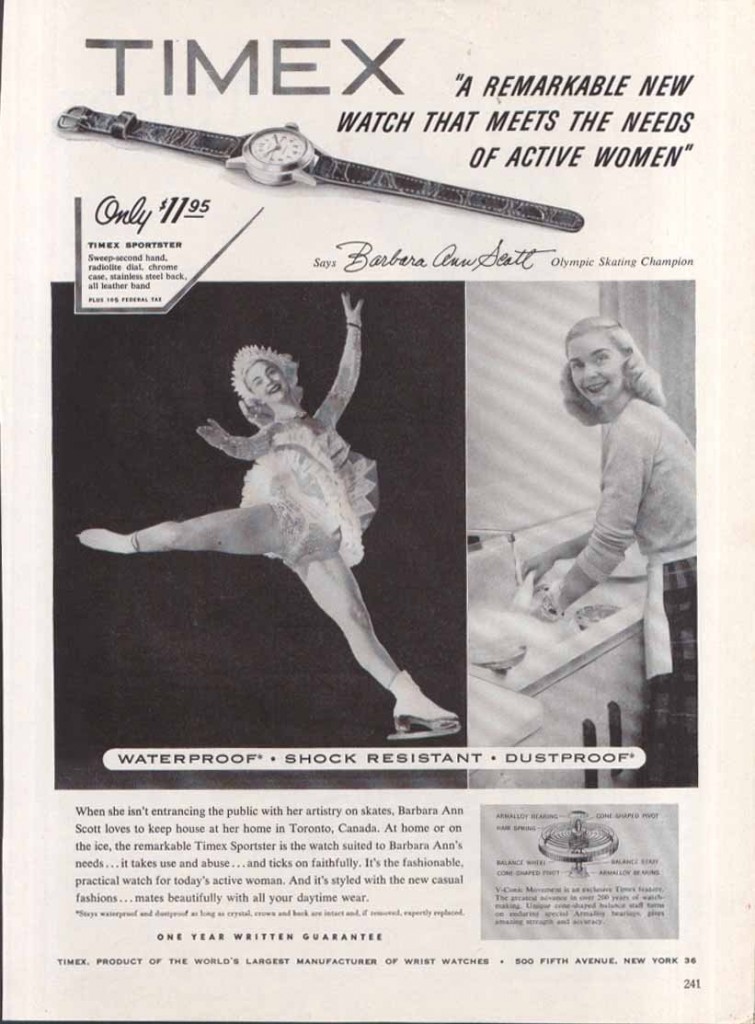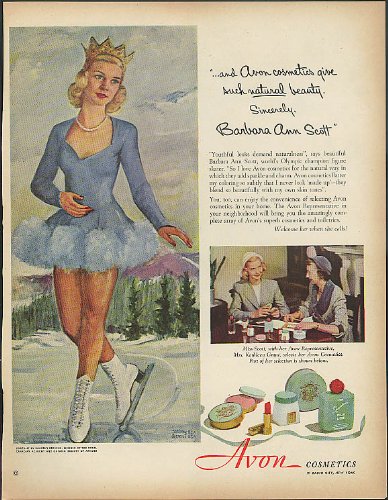As you may or may not know, Canada is known for its rich history in Winter Sports as we are a cold country for more months than I like to count. One of those sports that we have done very well in over many many years, is Figure Skating.
I grew up just obsessed with watching figure skating, even though I could not skate and I know that I was not the only child who adored the sport. So when I recently saw this wonderful stamp (seen below) I squealed with glee and just knew that I had to do a post about the wonderfully talented Canadian Figure Skater (and Olympic Gold Medalist), “Barbara Ann Scott“.
Barbara Ann Scott was more than just a figure skating champion; she was one of the most sensational sporting celebrities ever to come out of Canada. Her magnificent performance on the ice drew the attention of the world skating community, while her girlish beauty and her alluring personality captured the hearts of the post-war public worldwide.
Barbara Ann Scott “Canada’s Sweetheart” on Figure Skates
Brief History Lesson
(Courtesy of the Canadian Sports Hall of Fame)
Scott had an early start to stardom, appearing as Raggedy Ann at the age of six in an Ottawa ice show (her home town). She was first coached by Otto Gold at Ottawa’s Minto Skating Club. So intense was her dedication to the sport that she quit school and began studying with a tutor in order to accommodate her 7-8 hours of training each day. In 1940, at the age of eleven, she beat out skaters nearly twice her age to become the youngest junior champion in Canadian skating history. In 1942 she became the first woman to land a double Lutz in competition and then went on to claim the senior title in 1944 and the North American championship the following year. WOW!
In 1946, Sheldon Galbraith, who was to become one of the most successful Canadian figure skating coaches of the 20th century, joined the Minto Club. It was he who put the finishing touches on Scott’s performance and set her on the championship path.
In 1947, at the age of 18, Scott caught the attention of the international skating world when she won the European figure skating championships, the first North American to do so. A few weeks later, she claimed the world championship, again forging new ground for skaters from the west and simultaneously putting Canada on the international figure skating map.
Barbara Caught Up In Controversy
Upon her return to Ottawa, Scott was hailed by her adoring fans and presented with a new car bearing the license plate “47 U 1.” A famous controversy ensued, as the Ice Queen was risking her amateur crown in accepting such a gift. Despite much public protest, Scott reluctantly gave it back to ensure her eligibility for the Olympic Games the following year, where she was to receive a much more precious piece of metal.
1948 Olympics
1948 was Scott’s most glorious year. She easily reclaimed her world title, a mere prelude to the Olympics.
At the Games in St. Moritz, Switzerland, she swept the school figures event, which in those days counted for 60 percent of her score, but when she arrived at the rink where she was to give her free skating performance, she found that it had been ravaged by mild weather and a number of hockey matches. Before the competition, she and Galbraith explored every inch of the ice, taking note of any imperfections and strategically placing her jumps in the best spots. Avoiding any additional snags that had caught the other competitors off-guard, Scott gave a brilliant performance, dazzled the judges, and earned Canada its first Olympic figure skating gold medal. Scott’s outstanding achievements were cause for celebration across Canada.
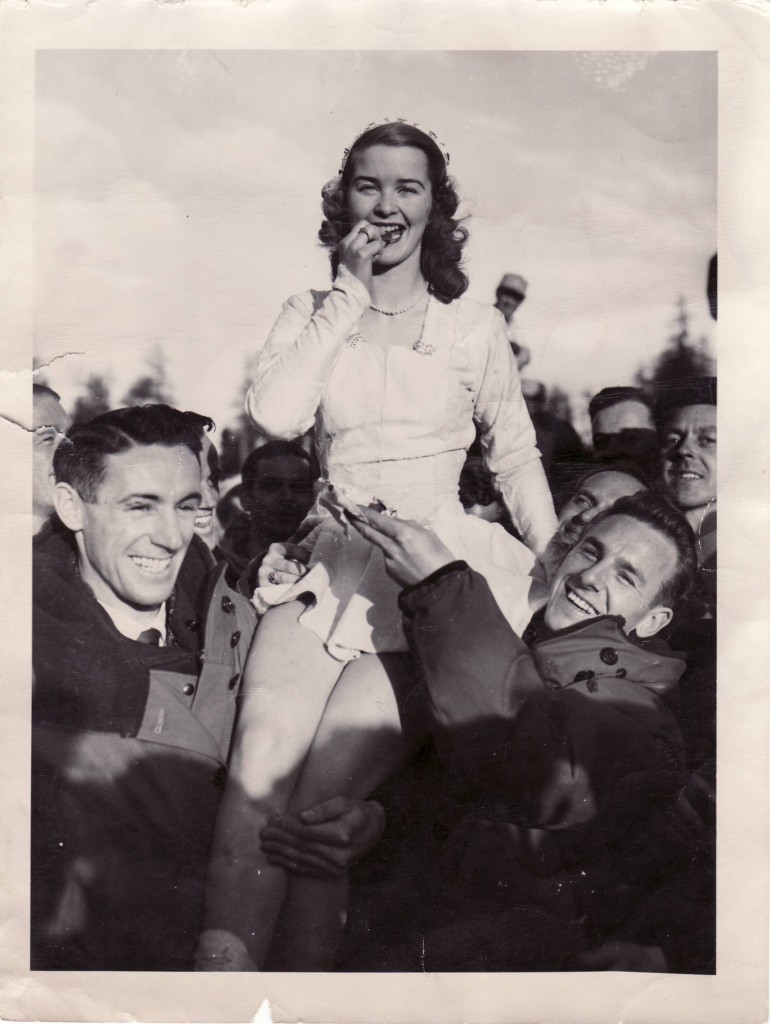
Upon her return, she was greeted by a crowd of 70,000 people in Ottawa’s Confederation Square and presented with another car, this one bearing the license plate “48 U 1.” This time, the Queen of Blades accepted, resigning her amateur crown and entering the professional ranks.
Insert amazing hat to wave at adoring fans in!
1940s vintage photo of Barbara Ann Scott Figure skater at her parade in Toronto after winning gold at the Olympic Winter Games.
Life After The Olympics
Scott spent the next few years starring with the Ice Capades and the Hollywood Ice Revue.
Glamor photograph in a 1954 publicity shot for the Hollywood Ice Revue.
Marriage
In 1955, she married Tommy King, a publicist whom she met on tour, and happily settled in Chicago.
Barbara Ann Scott wore a beautiful Artibello original gown of white French silk woven with rose motif at her wedding.
International Fame
She was an international heroine, fondly known as “Barba” to Czechoslovakian fans, “Barbeli” to the Swiss, “Champ” to the French, and “B.A.” to the British, Americans, and Canadians. So immense was Scott’s fame that her picture was perpetually plastered across international newspapers, while an incredible number of little girls born in the late 1940s and early 1950s were named Barbara Ann. There were Barbara Ann dolls (seen below), Barbara Ann skates, and Barbara Ann teddy bears, all tributes to the young woman who opened the world of figure skating to Canada and set the stage for future success. (Source: Canadian Sports Hall of Fame)
Companies also saw how popular she was and started to use her to help sell their products. -1950s vintage Timex ad.
Further Reading: Vintage Watch Ads- The Original Tick Tock
1940s / maybe 1950s Vintage Avon Ad with Barbara Ann Scott.
Legacy
For her efforts on the ice, Scott was voted Canada’s top female athlete in 1946, 1947, and 1948, and Canada’s most outstanding athlete in 1945, 1947, and 1948. For her pioneering efforts in establishing Canada on the international skating scene, she was named an Officer of the Order of Canada and inducted into the Canadian Figure Skating Hall of Fame in 1991 (Source).
Barbara sadly passed away September 30, 2012 at the age of 84 but will never be forgotten as she now and forever a part of Canadian history.
Are you a fan of figure skating? If so who are your favorites, past or present?
FURTHER READING:
- Collection of Blog Posts on ‘Vintage Women’s History‘
- 1928-Canada’s First Female Olympic Medalists
- Vintage Photo Tuesday: Winter Olympics-1920’s to 1950’s
Liz 🙂



